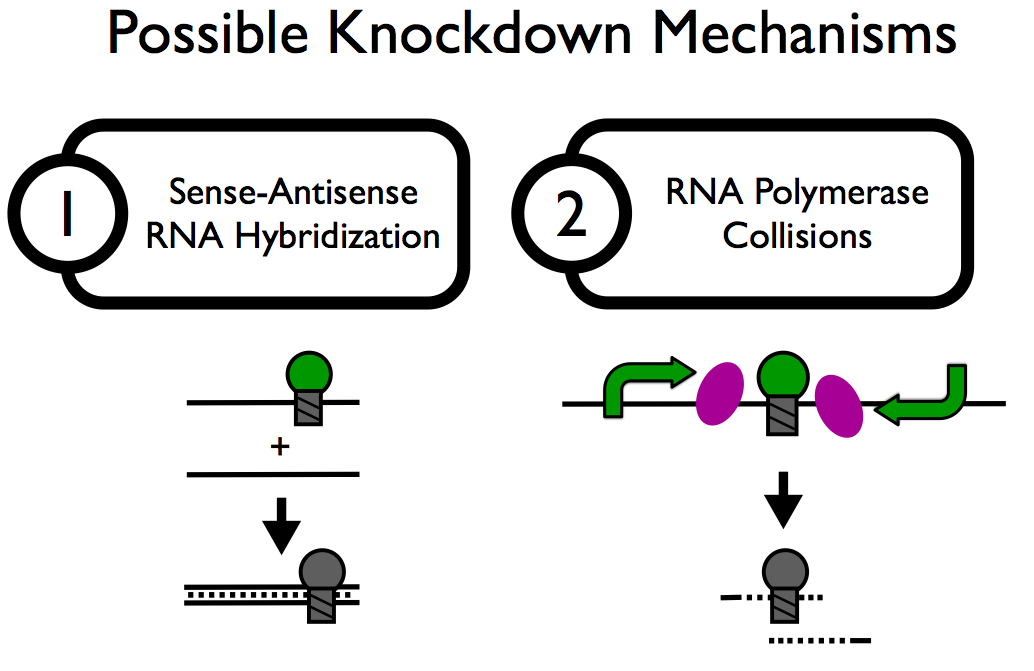Team:British Columbia/Jammer
From 2009.igem.org
Contents |
Traffic Light Switcher: the Modular and Endogenous Jammer
Overview
The traffic light requires a component that switches off a light that was previously turned on. To date, the registry does not have a method to easily turn off genes independently from a forward promoter (e.g. inducible and repressible promoters) or biological chassis (e.g. Dicer). We designed a modular, endogenous method of repression using a reverse antisense promoter. Our proof-of-concept jammer uses pBAD in the reverse direction along with various terminators to knockdown GFP expression.
We did the following:
- Assembled a reverse pBAD () with terminator () into a GFP generator
- Tested the first version by quantifying GFP expression to determine if knockdown exists
- Redeveloped the jammer by adding a forward terminator and optimizing terminator position
- Retested the second version and succeeded
- Submitted BioBrick to Registry
Results & Quantification
In our first test, we assembled a constitutively expressed GFP part with the first version of the jammer and quantified using FACS.
It appeared our first test did not work as expected. After redeveloping the jammer, by adding terminators and repositioning them, we tested the device again.
Here, we have shown that the Jammer works as expected, by inducing a near total knockdown of GFP expression. The forward terminator is necessary for its function, and although the biological mechanism is not clear at this time, we have proposed possible mechanisms below.
Possible Biological Mechanisms of Jammer
We proposed that, due to the reliance of a reverse promoter and two flanking terminators in the forward and reverse directions, that the hybridization of sense and anti-sense transcripts are inhibiting GFP expression. It is possible that because the double-stranded RNA is fully complementary, its complementary binding is particularly effective at protecting the transcript from translation. The necessity of the forward terminator suggests that a correctly sized antisense transcript significantly helps knockdown. Another mechanism that is possible suggests that the double-stranded RNA is being targeted for degradation, which would reduce GFP expression. Lastly, the reverse direction of RNA-dependent RNA polymerases may be colliding with the forward direction polymerase that transcribes GFP. However, this mechanism is unlikely to be as strong as the former or other possible explanations because, without the forward terminator, GFP expression is not inhibited.
BioBrick Submission
Here, you can find the working jammer . For use by other teams looking for a modular, easily repressible jammer, use along with a forward terminator such as . An experimental weaker jammer is .
 "
"



